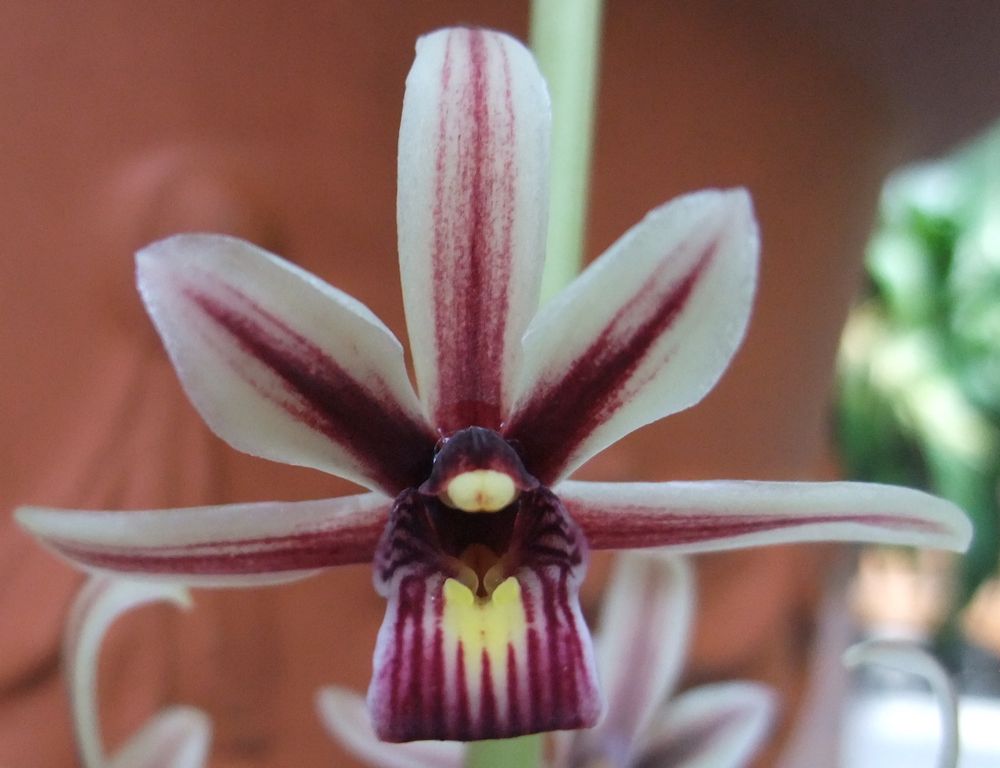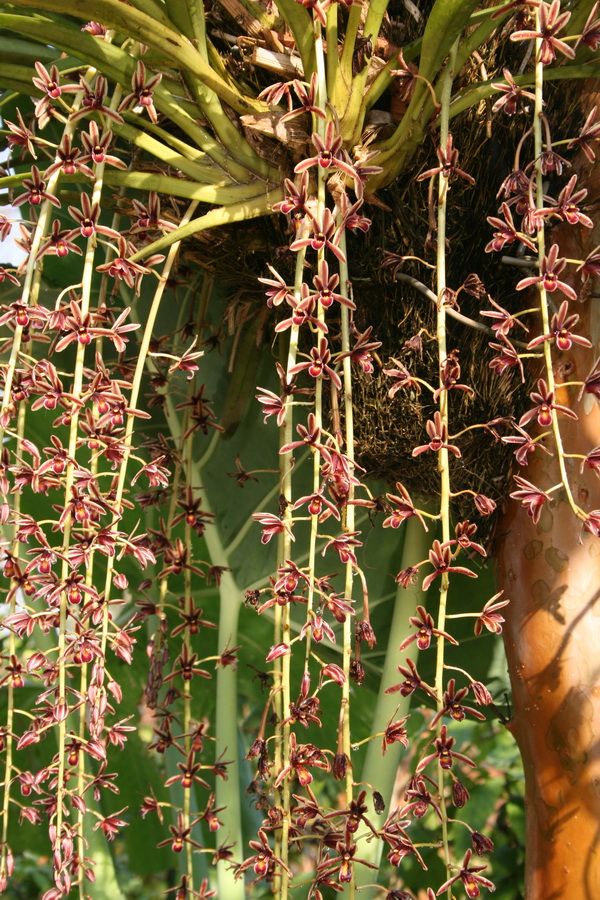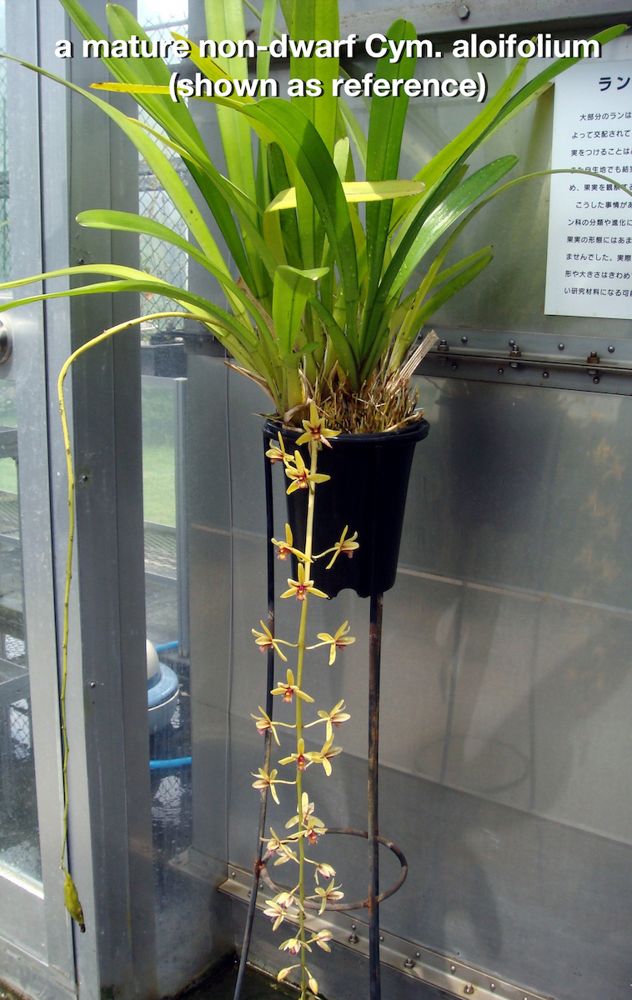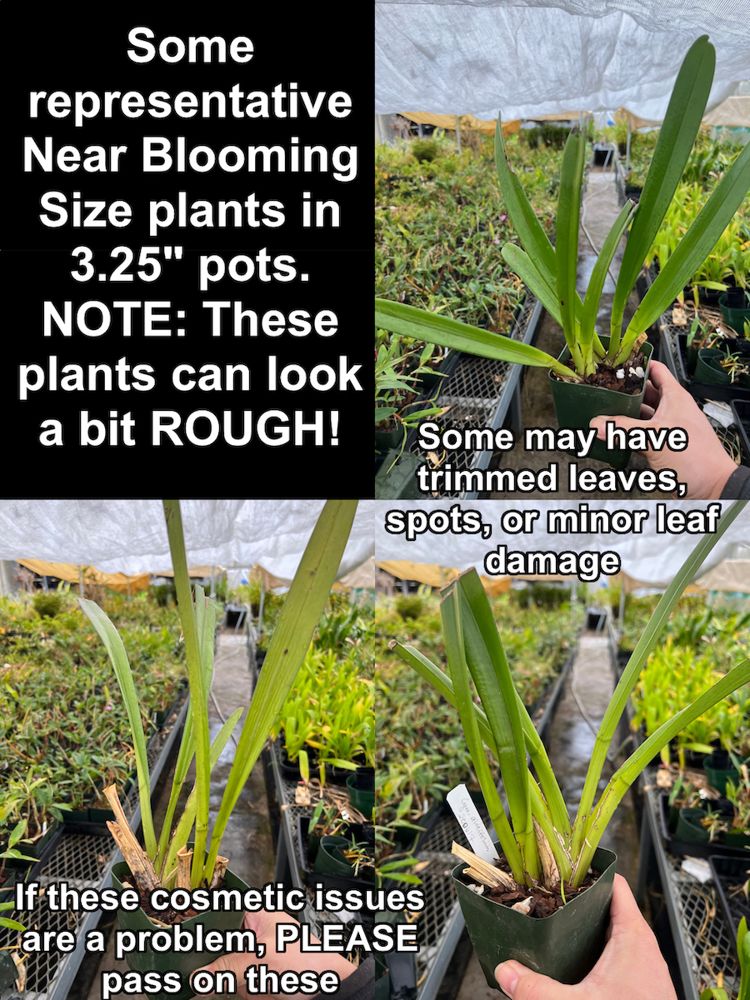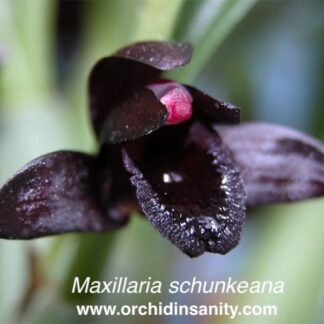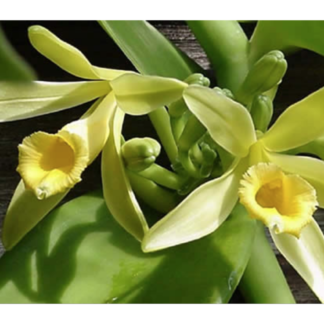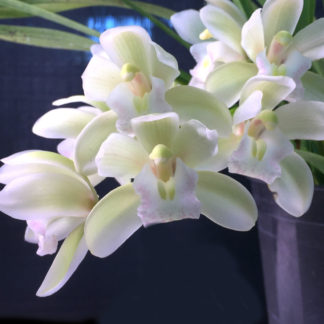Description
IMPORTANT NOTE: these plants are NOT IN BUD/BLOOM when shipped. PLEASE look at all the pictures in this listing so you know the condition/size of plant you’ll be getting.
This orchid, Cym. aloifolium, was once the quintessential Cymbidium orchid. In fact, it was, and still is, the very definition of a Cymbidium orchid. Every orchid genus has what is called the “type species”, which serves as the model or defining species of the genus, as it possesses all the main attributes that characterize the genus as a whole. In the genus Cymbidium, the type species is this very orchid, Cymbidium aloifolium.
For the orchid nerds and pedants amongst us:
In the genus Paphiopedilum, it is Paphiopedilum insigne. (Not surprising, actually.)
In the genus Dendrobium, it is Dendrobium moniliforme. (Quite surprising!)
What do these type species of large and popular orchid genera all have in common? Well, they’re all very uncommon in cultivation! You’re definitely not likely to find these type species at your local or even regional orchid show. It’s not that they’re undesirable, but rather that they’ve been overshadowed and long-overlooked. Demand for these type species is not even a drop in the bucket compared to the demand for their mongrelized (but beautiful) hybrid descendants or cousins.
Obviously there is a lot of variety in Cymbidium orchids, with about 100 known species, although, surprisingly, hybrids in cultivation derive from around only ten of these species. There’s even more variety in Paphiopedilums, a genus of ~100 known species with more dazzling diversity than Cymbidiums, and far more variety in Dendrobiums, a genus with 1500+ species and uncountable hybrids constantly being churned out. (The genus Dendrobium is the second-largest genus in the Family Orchidaceae; any guesses as to which is the largest? See end of listing text for the answer.)
Cym. aloifolium was classified as the first Cymbidium orchid back in 1799. Of course, there were other clearly related orchid plants that a botanist by the name of Olof Swoartz decided should be classified into one family (well, I mean “Genus” as the Family here is Orchidaceae). The word “Cymbidium” actually means ‘little boat’ in Latin (the official language of botanical plant descriptions); apparently this Olof Swartz thought the labellum of some species looked like a boat.
Cym. aloifolium grows all over Asia and into Indonesia, and is a cool to warm growing orchid that clings to trees in nature (and probably rocks, too). The ‘aloifolium’ part of the name comes from the shape of its leaves, which resemble the aloe plant. These leaves are thin and fleshy, and the plant at blooming size is going to be a quite manageable size suitable for windowsill growing, not one of these huge standard Cymbidiums more suited to a 5-gallon bucket (or larger!).
The inflorescence is pendulous with small star-shaped flowers, which closely resemble Cym. dayanum, a more common species.
In some places (probably India), the plant is used for its medicinal properties, and one published paper shows antimicrobial effects from extracts made from this orchid.
